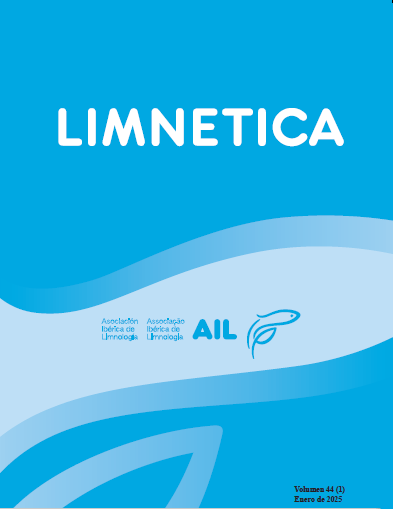Spatio-temporal variation in the zooplankton community of the Zahara-El Gastor Reservoir (Cádiz, Spain)
Zooplankton community of the Zahara-El Gastor Reservoir
Resum
Reservoirs play a crucial role in providing essential social and economic services at different scales. However, in recent years, anthropogenic impacts such as climate change and pollution have increased, affecting this type of ecosystem. Zooplankton communities are fundamental for regulating the biological balance in these environments, so it is essential to understand the processes that affect their dynamics. This study investigated the seasonal and spatial variation in species abundance of the zooplankton community of the Zahara- El Gastor Reservoir, Cádiz, Spain. This reservoir it is located in the Guadalete-Barbate River basin and is included in the Sierra de Grazalema Natural Park, the area with the highest rainfall in the Iberian Peninsula. Water and zooplankton samples were collected monthly over a year at four sampling sites located along the reservoir’s long-axis to determine its physicochemical characteristics and zooplankton species composition. The reservoir presented a mesotrophic state and a monomictic thermal cycle, with the mixing period occurring in winter. Temperature, water depth and volume, phosphates, carbonates, pH, and conductivity were the main environmental variables that affected the seasonal and spatial patterns of the zooplankton community. Rotifers presented the highest number of species and were predominant at the tail of the reservoir, especially in autumn, where Polyarthra spp. reached high densities. Relatively low densities of copepods were found throughout the year. Small branchiopods and cyclopoids were predominant in summer, while Daphnia longispina was linked to the colder seasons. The zooplankton community of the Zahara-El Gastor Reservoir reflected changes in the trophic state of the reservoir both in space and time.
Descàrregues
Publicades
Número
Secció
Llicència
Los autores que publican en esta revista están de acuerdo con los siguientes términos:
- Limnetica está bajo una licencia de Creative Commons Atribución-NoComercial 4.0 Internacional.
b. Los autores pueden establecer por separado acuerdos adicionales para la distribución no exclusiva de la versión de la obra publicada en la revista (por ejemplo, situarlo en un repositorio institucional o publicarlo en un libro), con un reconocimiento de su publicación inicial en esta revista.
c. Se permite y se anima a los autores a difundir sus trabajos electrónicamente (por ejemplo, en repositorios institucionales o en su propio sitio web) antes y durante el proceso de envío, ya que puede dar lugar a intercambios productivos, así como a una citación más temprana y mayor de los trabajos publicados (Véase The Effect of Open Access) (en inglés).


